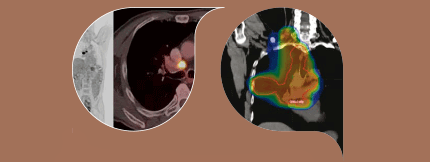Pathogenesis of lung cancer
The major function of the lungs is respiratory exchange. Inhaled air and potentially dangerous substances are conducted to the alveoli through a network of bronchi and bronchioles.
The putative stem cells of the bronchus are basal cells, which are believed to give rise to the differentiation of ciliated, mucous and neuroendocrine cells.
Lung cancer may arise from all these differentiated and undifferentiated cells, from either the central (small cell lung cancer and squamous cell carcinoma) or the peripheral (adenocarcinoma) airway compartment.
The interaction between inhaled carcinogens and the epithelium of upper and lower airways leads to the formation of DNA adducts: pieces of DNA covalently bound to a cancer-causing chemical.
Repair processes may remove the DNA adducts and restore normal DNA, or alternatively cells with damaged DNA may undergo apoptosis.
If DNA adducts persist or are misrepaired, they result in a mutation and can cause genomic alterations. These are key events in lung cancer pathogenesis, especially if they occur in critical oncogenes and tumour suppressor genes.
Lung cancer pathogenesis is also affected by a genetic component: it relates to the host susceptibility to lung cancer, with or without exposure to carcinogens.
Studies on familial aggregation have supported the hypothesis that a multifactorial hereditary component is possible, even if a clear mechanism of familial transmission is still not described.
The addition of smoking to this genetic inheritance is associated with a three-fold increased lung cancer risk.
Revision Questions
- Is there a unique and specific component of airway epithelium from which lung cancer can arise?
- What are the consequences of the action of inhaled carcinogens on the airways’ epithelium?
- Does the hereditary component have a role in lung cancer pathogenesis?




